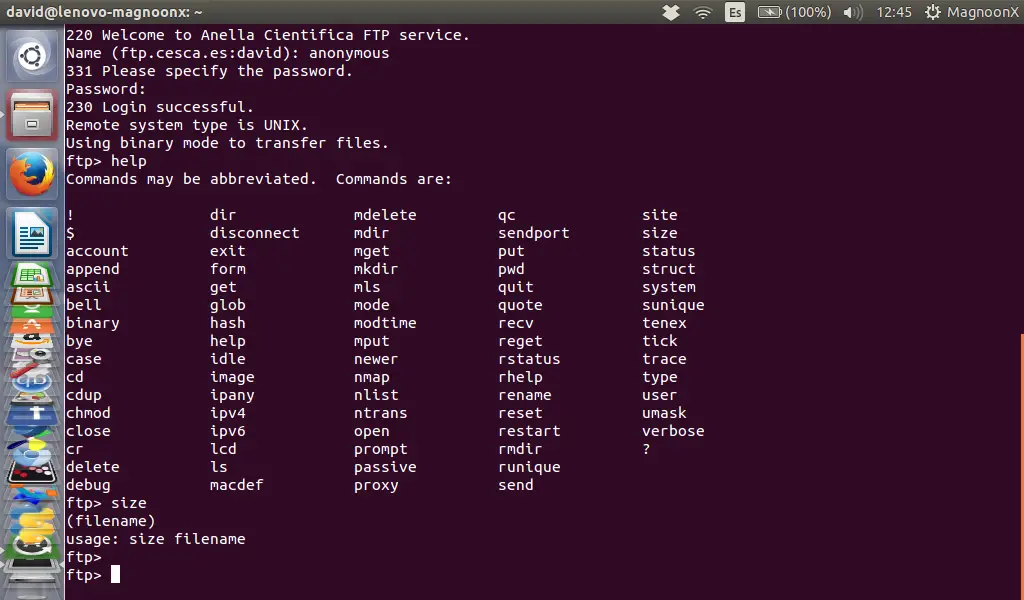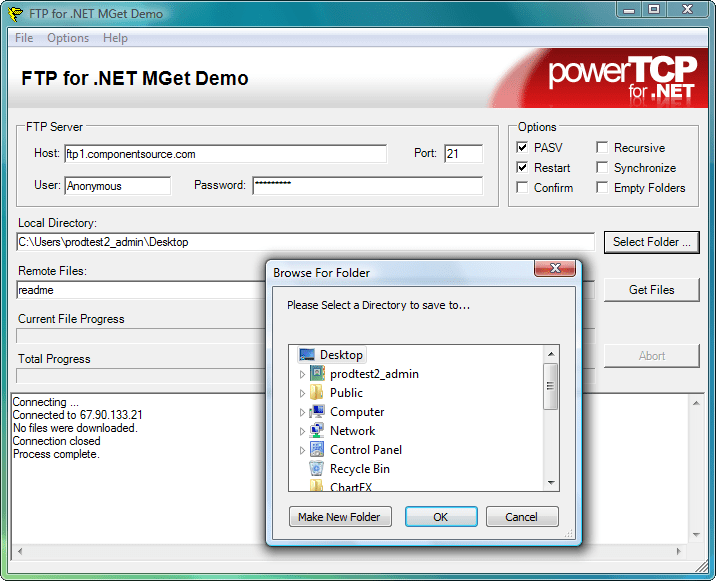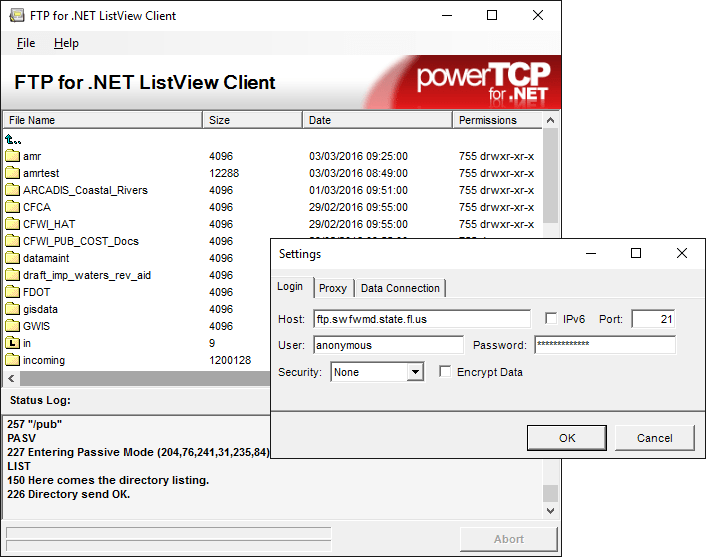Mput command options in ftp
The following information is provided as a reference for the File Transfer Protocol FTP commands. This document describes and demonstrates the client processes for an interactive and a scripted FTP session. Both the interactive and scripted processes were tested on a Windows System and a Linux Ubuntu This process may vary slightly depending on the hardware and software configurations of the local and remote systems.
We have made a significant effort to ensure the documents and software technologies are correct and accurate. We reserve the right to make changes without notice at any time. The function delivered in this version is based upon the enhancement requests from a specific group of users.

The intent is to provide changes as the need arises and in a timeframe that is dependent upon the availability of resources. This section describes a typical process for an interactive and automated, batch FTP session running on a Windows System and connecting to a UNIX System. The DOS prompt should be replaced with the FTP prompt. The FTP program is now running on the local system.
A connection or session to a remote system has not been established. The help command or? The following is an example of an FTP Command to display the FTP Help information. The following FTP Command will perform the FTP OPEN make the connection and display the following messages. The following FTP Command will change the directory on the remote system and display the following message.
The following FTP Command will find out the pathname of the current directory on the remote system and display the information. The following FTP Command will set the file transfer mode to ASCII this is the default for most FTP programs and display the information. The following FTP Command will copy a file using ASCII mode from the local system to the remote system and display the information. The following FTP Command will set the file transfer mode to BINARY the binary mode transfers all eight bits per byte and must be used to transfer non-ASCII files and display the information.
The following FTP Command will copy a file using BINARY mode from the local system to the remote system and display the information. The following FTP Command will exit the FTP environment same as "bye" and display the information.
The following batch file FTPSAME1 will start an FTP session and pass the name of a text file UPWIP TXT to the FTP program. This text file will be processed by the FTP program and each of the statements in the text file will be processed in the sequence they appear.
The preceding is a typical process for an interactive FTP session running on a Linux System and connecting to a UNIX Server. The following Bash Script File FTPWIPS1. The DIR command will list the contents of the remote directory. The following are additional commands that are used when tranferring files between an IBM Mainframe and a Windows or UNIX client system. Also, the following includes commands required when working with files containing variable length records.
This SITE via the literal or quote command statement is used at the client system and the LOCSITE command is used at the host system.

Both statements are used to transfer a function to the host site. The following is an example of the LITERAL command and a GET command. The commands are executed at the client and will cause the RDW Record Descriptor Word to be included at the beginning of each record of a file with variable length records.
The following is an example of the LOCSITE command and a PUT command. The commands are executed at the host and will cause the RDW Record Descriptor Word to be included at the beginning of each record of a file with variable length records.
The following is an example of the LOCSITE command for accessing tape files with variable length recoerds. The command is executed at the host and will cause the RDW Record Descriptor Word to be included at the beginning of each record of a file with variable length records. The purpose of this document is to provide a quick reference for connecting and exchanging information between two systems. This document may be used to assist as a tutorial for new programmers or as a quick reference for experienced programmers.
In the world of programming there are many ways to solve a problem. This document and the links to other documents are intended to provide a greater awareness of the Data Management and Application Processing alternatives.
The documentation and software were developed and tested on systems that are configured for a SimoTime environment based on the hardware, operating systems, user requirements and security requirements.
Therefore, adjustments may be needed to execute the jobs and programs when transferred to a system of a different architecture or configuration. SimoTime Services has experience in moving or sharing data or application processing across a variety of systems. For additional information about SimoTime Services or Technologies please send an e-mail to: We appreciate hearing from you. Permission to use, copy, modify and distribute this software, documentation or training material for any purpose requires a fee to be paid to SimoTime Technologies.
Once the fee is received by SimoTime the latest version of the software, documentation or training material will be delivered and a license will be granted for use within an enterprise, provided the SimoTime copyright notice appear on all copies of the software.
The SimoTime name or Logo may not be used in any advertising or publicity pertaining to the use of the software without the written permission of SimoTime Technologies. SimoTime Technologies makes no warranty or representations about the suitability of the software, documentation or learning material for any purpose. It is provided "AS IS" without any expressed or implied warranty, including the implied warranties of merchantability, fitness for a particular purpose and non-infringement.
SimoTime Technologies shall not be liable for any direct, indirect, special or consequential damages resulting from the loss of use, data or projects, whether in an action of contract or tort, arising out of or in connection with the use or performance of this software, documentation or training material.
This section includes links to documents with additional information that are beyond the scope and purpose of this document. The first group of documents may be available from a local system or via an internet connection, the second group of documents will require an internet connection.
A SimoTime License is required for the items to be made available on a local system or server. The latest versions of the SimoTime Documents and Program Suites are available on the Internet and may be accessed using the icon. If a user has a SimoTime Enterprise License the Documents and Program Suites may be available on a local server and accessed using the icon.
Explore Sample FTP Scripts and Windows Command Files FTP that will transfer files between a Mainframe Host System and a Windows Client System. Explore the alternatives for transferring data files between systems. Explore The ASCII and EBCDIC Translation Tables.
These tables are provided for individuals that need to better understand the bit structures and differences of the encoding formats. A good place to start is The SimoTime Home Page for access to white papers, program examples and product information. This link requires an Internet Connection. Explore The Micro Focus Web Site for more information about products and services available from Micro Focus.
If you have any questions, suggestions, comments or feedback please call or send an e-mail to: SimoTime Technologies was founded in and is a privately owned company. We specialize in the creation and deployment of business applications using new or existing technologies and services. We have a team of individuals that understand the broad range of technologies being used in today's environments.
Our customers include small businesses using Internet technologies to corporations using very large mainframe systems. Quite often, to reach larger markets or provide a higher level of service to existing customers it requires the newer Internet technologies to work in a complementary manner with existing corporate mainframe systems.
We specialize in preparing applications and the associated data that are currently residing on a single platform to be distributed across a variety of platforms. Preparing the application programs will require the transfer of source members that will be compiled and deployed on the target platform.
The data will need to be transferred between the systems and may need to be converted and validated at various stages within the process.
SimoTime has the technology, services and experience to assist in the application and data management tasks involved with doing business in a multi-system environment. Whether you want to use the Internet to expand into new market segments or as a delivery vehicle for existing business functions or need assistance with converting non-relational data structures simply give us a call at or check the web site at http: File Transfer Protocol A List of FTP Commands.
A Windows FTP Client. An Interactive FTP Session.
FTP (File Transfer Protocol) Command Examples
An Scripted FTP Session. A Linux FTP Client. An FTP Command List. An FTP Extended Command List. LOCSITE, LITERAL and SITE. Software Agreement and Disclaimer. Current Server or Internet Access. The SimoTime Home Page. Preceding a command with the exclamation point will cause the command to execute on the local system instead of the remote system. Request assistance or information about the FTP commands. This command does not require a connection to a remote system. Set the file transfer mode to ASCII Note: Set the file transfer mode to binary Note: Exit the FTP environment same as quit.
Delete remove a file in the current remote directory same as rm in UNIX. Lists the contents of the remote directory. Request a list of all available FTP commands. Change directory on your local system same as CD in UNIX.

List the names of the files in the current remote directory. Copy multiple files from the remote system to the local system. Make a new directory within the current remote directory. Copy multiple files from the local system to the remote system.
Find out the pathname of the current directory on the remote system. Exit the FTP environment same as "bye".
File Transfer Protocol (FTP), a List of FTP Commands
Remove delete a directory in the current remote directory. A List of FTP Commands. This will display all entries that start with the letter "b". For example, the following will be displayed. This will display all entries that start with the letter "b" and have the letter "n" somewhere after the letter "b".
This will display all entries that start with the letter "b", have the letter "n" in the 3rd position and have a three character name. This will display all entries that start with the letter "b" and have the letter "n" in the 3rd position.
A List of Parameters for the DIR FTP Command. Will send an argument to the remote FTP Server.
Linux FTP command help and examples
This statement is similar in purpose as the "QUOTE" statement. LOCSITE This statement may be used at the mainframe for commands specific to the mainframe. This statement is similar in purpose as the "LITERAL" statement. This parameter is used at the client system to transfer a function via the LITERAL or QUOTE statement to the host site. A List of Extended FTP Commands.
CYlinders To indicate that space should be allocated in cylinders. RDW will cause each record of a variable length record to be preceded with a four byte Record Descriptor Word RDW and possible four byte Block Descriptor Word BDW.
F, FA, FB, FBA, FBM, FM, U, V, VA, VB, VBA, VBM, or VBS. TRacks To indicate that space should be allocated in tracks. Parameters used with the LOCSITE Extended FTP Commands.
File Transfer Protocol FTP , a List of FTP Commands. When technology complements business.